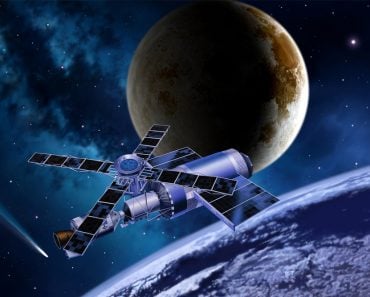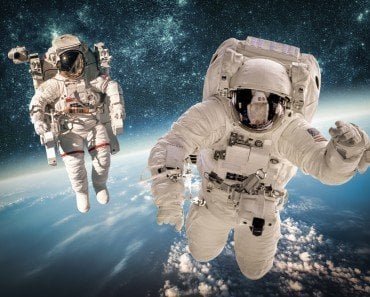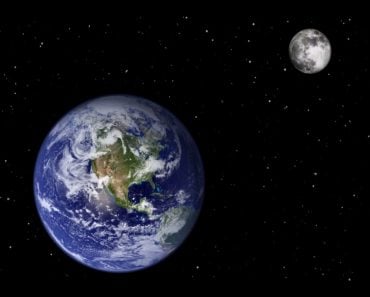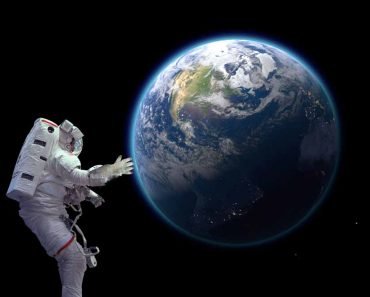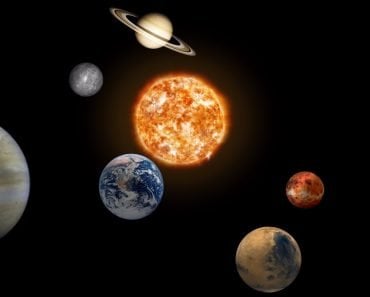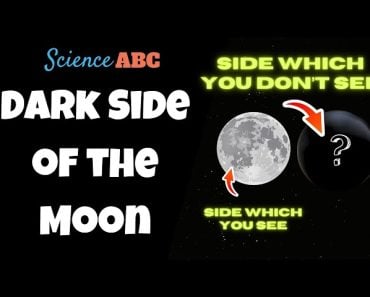Table of Contents (click to expand)
Their acceleration downwards is affected solely by Earth’s gravity, neglecting the mass of the body. Therefore, their mass has no effect.
Isaac Newton saw objects falling downwards after being suspended in the air all his life, but one fine day, in the year 1665 or 1666, he realized that there had to be a force causing the objects to fall downwards, instead of sideways or even upwards. He applied the same logic to an apple falling from a tree and used the example to devise his Universal Law of Gravitation[1].

Now, many stories have developed around the legendary apple and whether an apple actually fell on Newton’s head, or whether it simply hit the ground, as well as where the tree was or if such a tree existed in the first place, or did Newton merely use the tree to disguise the fact that his hypothesis wasn’t an original thought.
However, the important takeaway is the part of the story people can’t argue over:
The existence of a force that makes this Schrödinger’s apple fall to the ground. Isaac Newton referred to this force as gravity, and centered around that force, he formulated the universal law of gravitation.
Recommended Video for you:
Universal Law Of Gravitation
Newton’s law of universal gravitation states that any two bodies in the universe attract each other with a force that is directly proportional to the product of their masses and inversely proportional to the square of the distance between them.
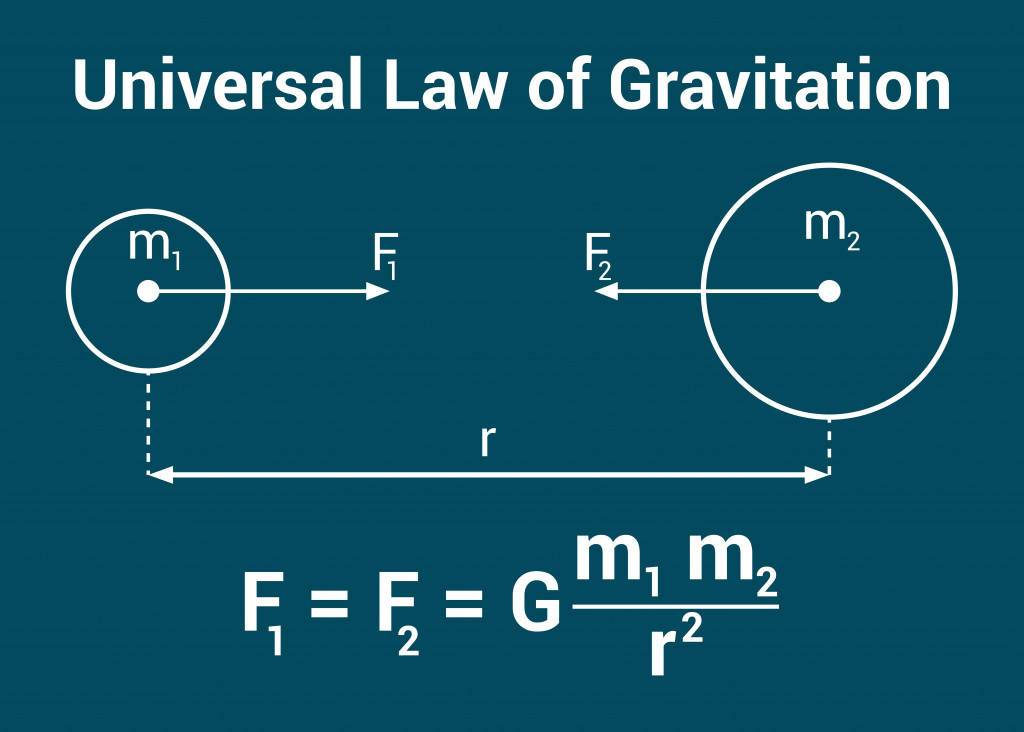
Here, G = Gravitational Constant[2] = 6.67 x (10-11) m3/kg s2
F = the force with which one body attracts the other.
m1 and m2 are the masses of the objects between which the force F is acting.
r = the distance between the two bodies.
G is the only constant involved in the calculation of the force of attraction between two bodies. It is known as the gravitational constant, and is the force of attraction between two bodies of unit masses when they’re placed at a distance of 1 unit from each other. This means that the force of attraction between two bodies under these conditions would be 6.67 x (10-11) m3/kg s2.
However, m1, m2 and r are variables, so their values depend on the bodies in question. Therefore, the force of attraction between two bodies depends on the masses of both bodies, as well as the separation between them. If this is the case, how is it possible for all bodies to fall towards Earth’s surface at the same rate, no matter how heavy they are or how far up in the atmosphere they are? Why is it that a rubber ball and an aluminum ball will fall to the ground at the exact same time if dropped from the same height?
Earth’s Gravitation
The answer to this is pretty obvious when we start to consider the universal law of gravitation in the context of the Earth. For the sake of the calculation, we consider the Earth and the body falling towards its surface as point masses. The Earth’s mass is about 5.972 x 1024 kg. Even the heaviest man-made projectiles, such as rockets, weigh around 30,000 kg. That’s like comparing a human being to a grain of sand. There is no possible comparison that could be made between the two bodies (planet vs rocket) owing to the humongous difference in their sizes.
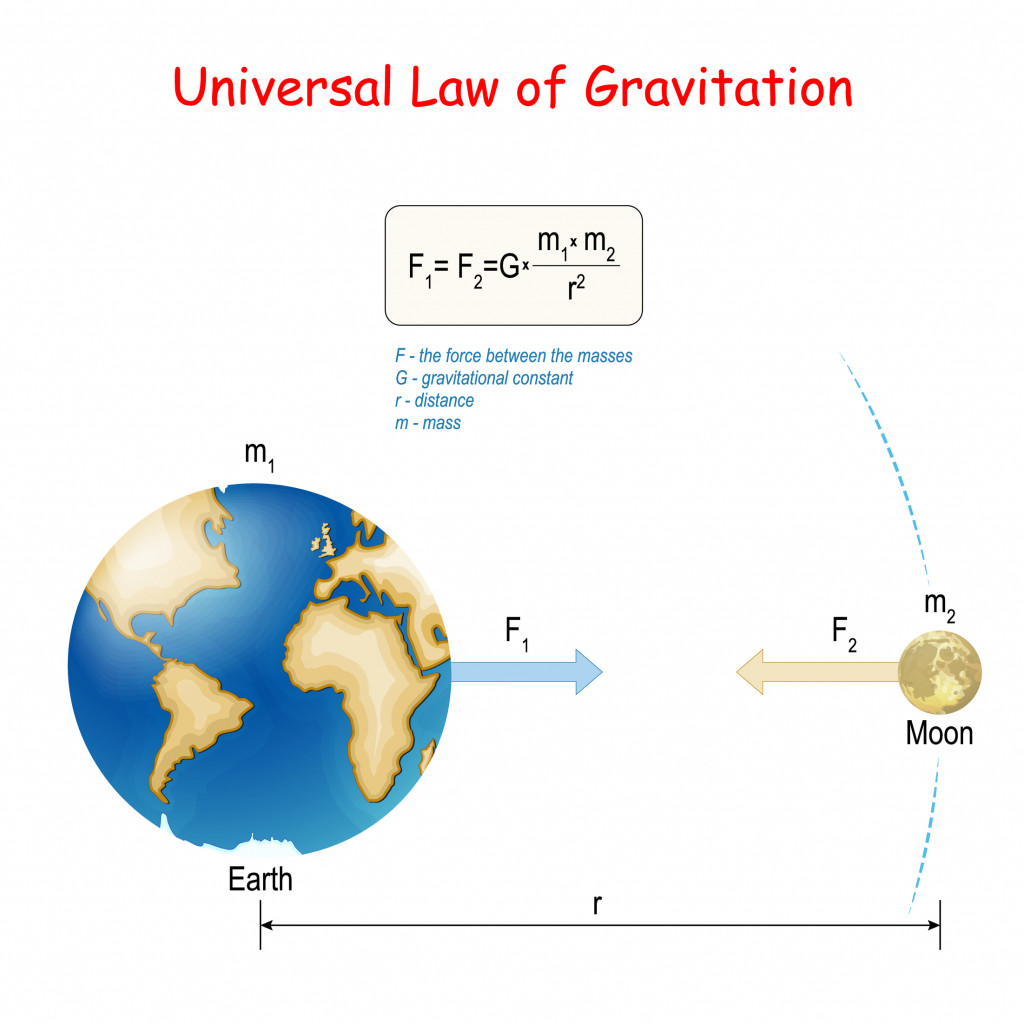
So, if in the expression for the universal law of gravitation, we were to assume m1 to be the mass of the Earth and m2 to be the mass of any object falling towards the Earth’s surface, their difference would be too absurd for comparison. Just as a grain of sand would simply never be able to exert any noticeable force on a human being, the object in the former question is far too small compared to the Earth to exert any force on it.
Therefore, we neglect its mass m2. Effectively, in a system consisting of the Earth and a body falling towards its surface, the only body exerting any force is the Earth. This force is known as acceleration due to gravity and is represented by ‘g’[3], with a value of 9.8m/s2. The mass of all objects is their intrinsic property, but their weight depends on this value of g.
Weight And Mass

g is different for different planets, depending on their mass. The moon’s gravitational pull is about 1/6th that of the Earth[5], so any object’s weight on the moon would be 1/6th of what it weighs on Earth. Any object that falls towards the surface of the moon will fall at about 1/6th the rate that it would fall towards the surface of the Earth.
So why do a feather and a rubber ball fall to the ground at different times? Well, a feather’s structure and extremely low mass make it susceptible to the force of air pressure, which acts on the feather in a direction opposite to the Earth’s gravitational pull. Most objects, however, are too heavy to be affected by upward air resistance.
Since they’re too light to affect the Earth in any way, the only force affecting the motion of a body falling towards the Earth is g=9.8m/s2.
Therefore, their rate of falling towards the Earth’s surface is independent of their mass.
References (click to expand)
- 6.5 Newton's Universal Law of Gravitation – College Physics. The University of Iowa
- Hirakawa, H., Tsubono, K., & Oide, K. (1980, January). Dynamical test of the law of gravitation. Nature. Springer Science and Business Media LLC.
- Buček, S. (2016, July). Falling Objects And Projectile Motion With Regard The Air Resistance. EDULEARN proceedings. IATED.

